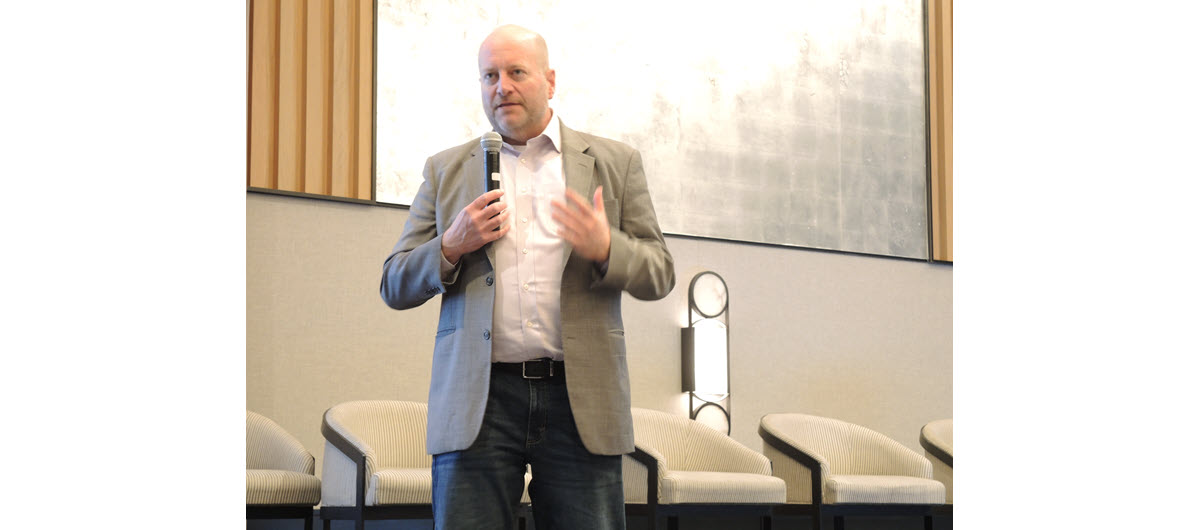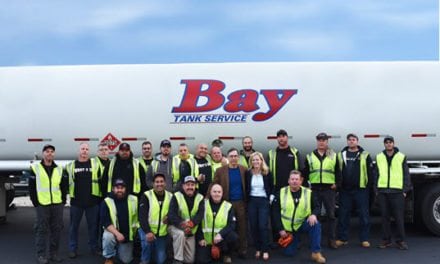What to expect from a Transportation Energy Institute Meeting
By Keith Reid
The Transportation Energy Institute (TEI), formally the Fuels Institute, is at the forefront of trying to tackle today’s energy challenges being driven by the push for a zero-carbon future. What makes it different from many organizations in the space is the Institute operates as a neutral and non-advocacy entity. Even though it was birthed through NACS the goal is not to represent the views of the fuel retailers and distributors, but rather assist in the development of the energy policies NACS members (and everyone) must deal with once policies are set. The goal is to ensure that these policies are effective and efficient for all stakeholders.
TEI is composed of stakeholders from the breadth of the transportation sector. These include automakers, fuel retailers and marketers, government entities, conventional and alternative fuel producers, the EV charging sector (including utilities) and many niche companies and advocacy groups.
They work together to develop research projects to answer fundamental questions as a base of knowledge and starting point to look for common ground and points of compromise. Their sheer diversity ensures these projects are conducted in as neutral a manner as through a peer review process involving parties that often, if not typically, have opposing public positions on the topics being researched.
The Institute also hosts a meeting each year which is, by and large, a symposium with many panel discussions, covering the hottest topics in transportation fueling and energy. This year’s Fuels’ 23 was held May 22-24, 2023, in St. Louis, Missouri. There were 11 sessions and multiple networking functions packed into two solid days of education, discussion and networking. Here is a look at the core topics of conversation at the meeting and some of the interesting positions and points raised by both the speakers and the audience in lively question and answer sessions.
One note, the Institute operates under what is known as Chatham House Rules. Under these rules no one is specifically allowed to be publicly quoted. The reason for that is the cornerstone behind the purpose of the Institute. Most of the issues being considered have both significant political and economic ramifications and Institute membership covers the spectrum of special interests on those issues. For there to be an open and honest discussion and real potential problem-solving, participants must feel free to be say things in an unguarded manner without worrying about those comments being used to damage their organization’s position if weaponized by the opposition.
The statements of John Eichberger, TEI director, have been authorized with his approval.
Who Was in Attendance
There were a variety of organizations present, some serving as speakers or panelists, that covered the spectrum of transportation interests. Here is a slice of attendees from different sectors.
Representing retailing and marketing you had Caseys, Kum & Go, The Kroger Company, Hightowers Petroleum, CHS, Costco Wholesale, Walmart Stores, Sheetz, Pilot Trave Centers, Offen Petroleum and Venture Fuels, to name a few. NACS, SIGMA and NATSO were also represented.
On the EV front there was Electrify America, E Source, Alliance for Transportation Electrification, Techniche and ABB E-Mobility, among others.
Oil companies included ExxonMobil, Shell, CITGO, Sonoco, Phillips 66 and Chevron. API and AF&PM were also in attendance.
Neste, POET, Growmark, Trillium, Chevron Renewable Energy Group, National Renewable Energy Laboratory, Hydrogen Fuel Cell Partnership, National Corn Growers Association were there representing bio and renewable fuels.
OPW, Gilbarco Veeder-Root, Source North America, Franklin Fueling Systems, Seneca Companies, Wayne Fueling Systems, JF Petroleum Group and Petroleum Equipment Institute constituted the equipment side of fuel distribution.
A range of other associations and organizations were in attendance, including American Lung Association, North Central Texas Council of Governments, Southwest Research Institute, U.S. EPA and Oak Ridge National Laboratory.
On the vehicle side there were Volvo Group, Cummins and Toyota.
Here are a few of the topics discussed and the general tone of those discussions.
On the zero-carbon push
Eichberger opened the meeting by raising the point that it doesn’t matter if you believe in global warming or not there is currently a strong push towards a net-zero carbon future among a range of nations, including the United States under the Biden administration, with additional actions nationally at the state level.
The current focus is overwhelmingly on a transition to electric vehicles, practically to the exclusion of other potential solutions with the exception of hydrogen for heavy trucks. There is a concern among many parties that all the eggs are in one basket. This chokes off research into improved internal combustion solutions (engines and fuels) that might better fit specific needs and prevents opportunities to reduce carbon emissions among the legacy fleet during the many decades that will be required to achieve net-zero transportation.
Eichberger further raises the point that you can’t do the environment at the expense of people, or the people will reject the program. Solutions that are not affordable and practical will not gain traction. Therefore, focusing on a singe solution raises the possibility that any setbacks in that area will result in setbacks for the overall push.
A question later in the meeting asked what would happen with a change to a more conservative executive branch in 2024. Much of the intensity in the sector now is due to the Biden administration’s emphasis, which was decidedly lacking during the previous Trump administration. It was acknowledged that such a result would likely slow down the national push, yet internationally and at the state level there would likely be fewer changes.
The role of the utility in EV charging
The current utility perspective on EV charging was covered in some detail. There was a call to view the utility as a partner as the EV push moves forward. However, nothing in the discussions indicated that significant progress had been made with current points of contention. For example, demand charges especially in combination with consumer appealing DC fast chargers (DCFS). With enough volume demand charges become manageable and charging becomes profitable for the retailer. However, most DC fast chargers have a low utilization rate averaging approximately 2%, though in certain areas favored by early adopters this can reach 30%.
It was noted that a variety of utilities are experimenting with ways to reduce the impact through such initiatives as demand charge “holidays” or rebates. A flat subscription model is also a possibility. There was no real discussion, as has been the case to date, about utilities being broadly willing to eliminate the demand charge.
The state of the electrical grid is another issue that is frequently raised and was discussed at the meeting. It was acknowledged that the grid is not ready now, but utilities know how to plan, and putting together a plan to meet needs over 15 to 20 years is not an enormous challenge.
The role of the utility as either an electron provider or as a charging service provider was not discussed in great detail other than to note that both models were being explored by various players throughout the utility sector.
One point raised that a great many people probably do not fully appreciate, is that an electrical utility does not operate in the same way a private business operates in areas like pricing. As monopolies, they are required to have pricing regulated by state-level boards to meet anticipated needs. One challenge that will be hard to get around is working an EV charging model of any sort on a state-by-state basis with many new considerations compared to the traditional service discussion.
Decarbonizing internal combustion engines
It was noted that the scope of transportation decarbonization is likely not fully appreciated outside of the industry. The challenge is so great that all industry solutions, including but not limited to EVs, will likely be needed. The call was made to allow all potential solution providers to compete in the marketplace with equitable standards and let the market take over for special applications.
It was pointed out that from a lifecycle standpoint an EV may have zero omissions from the tailpipe but not when the emissions from the manufacturing process or electricity generation source are factored into the equation. Purely renewable sources of electricity such as wind power are very efficient from a carbon standpoint, but the dominant coal and even natural gas used today come up short under existing IPCC zero carbon goals. Can you fully replace coal and natural gas with renewables?
On the ethanol front, it was emphasized that ethanol has a very promising pathway to net-zero carbon and concerns over agriculture’s ability to meet the requirement for more ethanol are unfounded. There is significant existing capacity and that can be increased further without impacting the food surplus or global economic growth.
The Renewable Fuels Association showcased the carbon reduction success it enjoyed in a test with plug-in hybrid electric vehicles, in this case a flex fuel 2022 Ford Escape running on E85. There are currently 26 to 27 million flex fuel vehicles that can immediately take advantage of higher blends of ethanol.
The benefits of renewable diesel were discussed as a high-performing drop-in fuel that could be used in the market today in existing diesel engines in the commercial sector. This would immediately provide lower carbon outputs for legacy systems as a competitor in heavy-duty use with hydrogen.
Commercial vehicles
The manufacturers of commercial trucks and the fleets these vehicles stated an openness to exploring any technology—CNG/LNG, EV, hydrogen fuel cells, renewable diesel—etc. It was noted that in some areas EV trucks work well, and others not so well depending upon the duty cycle. EV trucks are also currently more expensive than the commercial fleets would like.
While the transportation side is addressing the zero-carbon push, the shippers are primarily interested in facing no financial impact through a conversion.
BayoTech provided a test demonstration of a hydrogen transportation trailer, which is part of the infrastructure required for hydrogen fuel cell technology which, as noted, is seen as being a diesel substitute for large trucks.
This is just a light overview of the many hours of education, discussion and networking that took place at the meeting. Joining the Transportation Energy Institute allows any interested party to experience all that the meeting has to offer and potentially help shape the solutions that will impact their sectors of the industry.









